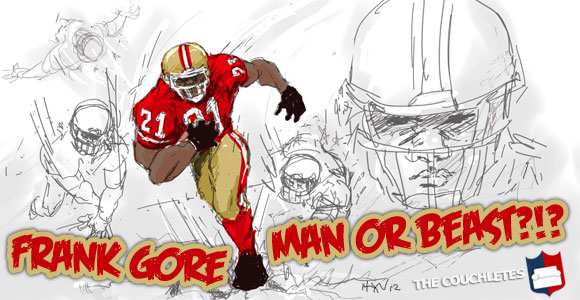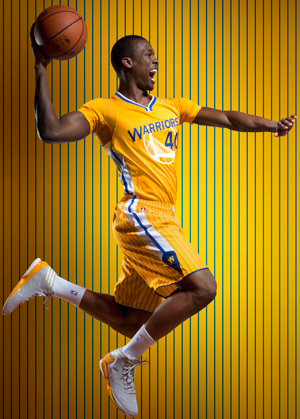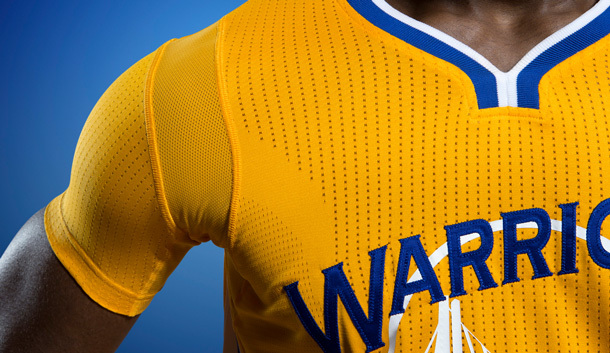By Mark Gaspar

The bottom feeders are coming for you.
As we cross the threshold of the NBA season’s halfway point we’re left with a lot of stories to ponder. Will the Lakers get their act together? Can anyone challenge the Heat in the east? Do the Spurs have enough left in the tank to compete for a fifth title? Could I love Ricky Rubio any more than I do now?
But there are other storylines. Deep within the dark recesses of our collective minds, in a place we don’t like to admit exists – let alone talk about – resides the walking dead; a collection of teams without hope of success. They’re just going through the motions. There will be no playoffs for them. No last second push. No absolution or chance for redemption. Only pain and suffering. Surrounding these teams is the familiar mantra “maybe next year.”
However, not all the members of the walking dead are as dead as others. Some still have some life in them. Some still offer something interesting to watch or look for. Below, I’ll break down our undead into two camps. The “Really Dead” i.e. Please watch something else, and the “Little bit of life in them” i.e. something interesting is going on.
Keep in mind the trade deadline is tomorrow so these could be meaningless by the time you get around to read this. Thanks for nothing NBA.
The Unwatchables
Charlotte Bobcats
There’s not a way to say this delicately. The Charlotte Bobcats are a bad team. Could they end up being good? At some point maybe. In the not too distant future? No. They currently have 2 ¼ serviceable players.
Player 1: I’ve only seen a few Bobcat games this year but Kemba Walker has been far and away the best thing about the team. If he can improve his defense, he should be able to comfortably reside in that top-20 PGS in the league (this is not an insult. Have you seen how many good point guards there are?)
Player 2: I really enjoy watching Bismack Biyombo. Sadly, he’s probably a minimum two years away from being a serviceable NBA player. I’d compare him to his former countrymen Serge Ibaka. Both athletic freaks and neither one of them knew what they were doing the first couple years they were in the league. Will he figure it out like Ibaka? I don’t know, but it might be worth checking in from time to time.
Player ¼: Michael Kidd-Gilchrist is a really good player. It’s just unfortunate he hit the rookie wall after the first month of the season. When he’s on he’s very entertaining. He defends; he passes; he can score a little bit. Has the potential to be a poor-man’s Andrei Kirilenko if he stays healthy and continues to improve.
Should you watch?: You’ve always wanted to read “Moby Dick” and by the time you finish they might be decent.
Sacramento Kings
This team has a ton of talent on it and yet I like close to nothing about them. Demarcus Cousins is a beast. If he screws his head on right he’ll be the second best Center in the league after Dwight. However, his actions have proven that that is a pretty big IF and if/when it happens it probably won’t be with the Kings/Sonics.
As for Tyreke Evans, he’s a physical freak. Unfortunately he doesn’t really know how to play basketball.
If you’re a Kings fan… well, I’m sorry. This team drafts players without knowing what they’re going to do with them. This leads to players getting frustrated as they are rarely put in a situation where they can succeed. This isn’t so much the players fault. They didn’t choose to be drafted by the Kings but it is systemic of their entire operation. And to make matters worse for their fan base (one of the best in the league by the way) they’re probably moving to Seattle.
Should you watch?: It might be time to go out and interact with your fellow humans.
Orlando Magic
The Orlando Magic are in a dark place right now. Unburdened of Dwight Howard they are a team without an identity or star. Their best player is currently J.J. Redick and there’s roughly a 100% chance he will be traded by tomorrow afternoon. Their best chance is to win the lottery. Sadly for them there isn’t a franchise-changing player to be found this year. What does this all mean? It means the Magic are going to be bad for the next half-decade, minimum.
Should you watch?: I’m pretty sure ESPN 2 is showing reruns of NFL Countdown.
Phoenix Suns
The Suns are in pretty much the same boat as the Magic but with one of the worst owners in the league. They recently parted ways with Steve Nash so they’re currently operating without an identity or any quality NBA players. They do have Marcin Gortat and Jared Dudley, i.e. two very capable players who would be nice on any team competing for the playoffs. However, when you pair them with Michael Beasley, you’re not going to win a lot of games. Again, just like the Magic there aren’t any players on the team as it’s currently constructed that can give their fans much to look forward to.
Should you watch?: Isn’t House Hunters on right now?
If the Thunder or Heat aren’t playing it wouldn’t hurt you to watch them
Washington Wizards
The Washington Wizards are starting to figure things out. After a horrendous start they’ve found their footing and are starting to play if not winning basketball, at least watchable basketball.
John Wall is healthy and starting to live up to his potential. Bradley Beal has had a few moments that show what type of player he could be. Combine them with veterans like Nene and Trevor Ariza and you have a team that can compete most nights. Will they make the playoffs? No. Even with as bad as the Eastern Conference has been this year they’ll still miss out by quite a few games. But with a smart draft and a few trades/free agent signings that break their way they could be competing for the 8th seed as early as next year.
Should you watch?: If some of the teams below aren’t on I’d recommend checking out the Wiz… at least when John Wall is on the court.
Cleveland Cavaliers
The Cleveland Cavaliers are one of the most watchable teams in the league even though they have the worst record. Why? Because Kyrie Irving is the most thrilling player to watch outside of LeBron James. His speed, balance, and decision making can at times leave you breathless, or if you’re Brad Beal, on your back.
The Cavs haven’t done a great job surrounding him with talent (sound familiar Mr. James?) but they should be in line for another quality draft pick. They just need to make sure they don’t choose another Tristan Thompson or Dion Waiters.
On the bright side, at least Anderson Varejao didn’t die from his blood clot scare.
Should you watch?: If Kyrie is healthy you should definitely watch the Cavs.
Minnesota Timberwolves
Do I have an unbiased opinion about the Timberwolves? Yes, yes I do. Should you believe me when I say you should watch them? Yes, yes you should. Just maybe not right now.
Before the season started the puppies were a trendy pick to be a 5th or 6th seed in the west. Then, Kevin Love broke his hand, Chase Budinger tore his meniscus, Brandan Roy’s knee exploded… again, Josh Howard’s knee exploded, and Ricky Rubio started his come back after exploding his knee last year. With five remaining players and two healthy knees to share the Wolves have had a hard time winning games. This trend will continue until they get a few players back.
That’s the bad news. The good news?
Ricky Rubio is starting to come back into form. Over his past 10 games he’s averaging 13.1 points, 8.6 assists, and 2.4 steals a game. These are pretty good numbers. Regardless of how many injuries they’ve had, a healthy Rubio makes this team a League Pass favorite.
Other bright spots: Kevin Love will return in the next few weeks. Chase Budinger will too. Will it be too little too late? Yes. The Western Conference is so stacked this year that a team is going to need close to 50 wins just to get the 8th seed. However, NBA fans will get at least 15-17 games to watch this team as it was originally constructed. It should be fun. And it sets them up well for next year.
Should you watch?: Watch the Timberwolves. Bet on their opponent.
New Orleans Hornets
The Hornets are a lousy team. So why are they on the watchable list? Well, they have Anthony Davis, one of the best big men prospects of the last decade. When he’s healthy he’s a defensive terror and turns NOLA into the Cajun Lob City. Do they have weak links? Yes, Austin Rivers is putting up numbers that put him in the running for worst basketball player of all time. Eric Gordon can’t stay healthy, he doesn’t like the team and the fans don’t like him. However, they have a new owner, a new name as of next year, and they should be in line for another decent draft pick. If they can find a good small forward to pair with Davis and Greivis Vasquez they could have a nice little nucleus.
Should you watch?: This year? Sure, as long as you’re doing something else useful.
By Mark Gaspar
Follow Mark on Twitter at @markgaspar
You can contact Mark at mark@thecouchletes.com




